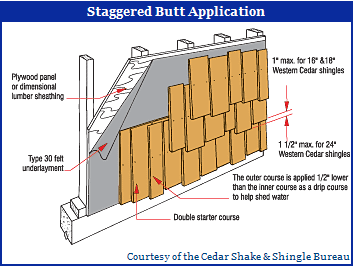Western Red Cedar Shakes and Shingles: A Sustainable, Versatile Roofing Choice
IMPACT RESISTANCE
When the insurance industry asked the roofing industry to test product resistance to hail damage, the steel ball drop UL-2218 impact resistance test placed CSSB member cedar shakes and shingle products at the top of the scale with Class 3 and Class 4 results.
UL-2218 is the Underwriters Laboratories test standard for Impact Resistance of Prepared Roof Covering Materials. The acceptance criteria upon examination after being subjected to the test procedure is: prepared roof covering material exposed surface, back surface and underneath layers shall show no evidence of tearing, fracturing, cracking, splitting, rupture or other evidence of opening of the prepared roof covering layer. For further information on this testing procedure please visit www.ul.com. The classifications for impact resistance are expressed as Class 1, 2, 3 or 4 which relate to a roof covering's ability to withstand impacts from 1 1/4, 1 1/2, 1 3/4 and 2" diameter steel balls, respectively. CSSB member products are available with a Class 3 or 4 impact resistance rating, depending upon product type. Some insurance companies in hailstorm prone areas will offer discounts on premiums if an impact resistance rated roofing material is used.
Cedar products are highly resilient in earthquakes, and are lightweight with no re-decking required, as with other heavier roofing materials. As a natural material, there are no artificial layers that can delaminate in freeze-thaw cycles. Since cedar naturally weathers to an attractive gray color, matching factory color lots if repairs are needed is not a concern.
Workmanship Issues
As with all construction materials, good workmanship practices that comply with local building codes are important design and construction issues. It should be noted that shake and shingle applications are not the same.
Basic application criteria include the following:
- Never interlay shingles with felt. Consult local building codes.
- Be sure that interlay felt on shakes does not extend below a line that is twice the exposure above the butt (i.e., a 24-inch shake at 10-inch exposure would have felt applied 20 inches above the butt)
- Keyways must not be aligned and must be a minimum 1 1/2" offset from the course above. Keyways are the spaces between adjacent shakes or shingles.
- Overdriving or underdriving the fasteners can seriously damage the integrity of the roof or wall system
- Only use stainless steel (type 304 or 316) hot-dipped zinc coated, or aluminum nails or other fasteners as accepted by the local building official. Always check with the pressure impregnation treatment company for the types of fasteners required for its products.
- Ring shank nails provide significantly higher wind uplift resistance
Both reduced exposure and staggered butt applications can result in additional product quantity requirements. A staggered butt design is achieved by shortening the exposure to less than the greater maximum exposure, not by overexposing some of the product or mixing product types. A staggered butt or a reduced exposure application can easily result in additional material costs, if appropriate calculations are not performed regarding the number of squares required for the project.










